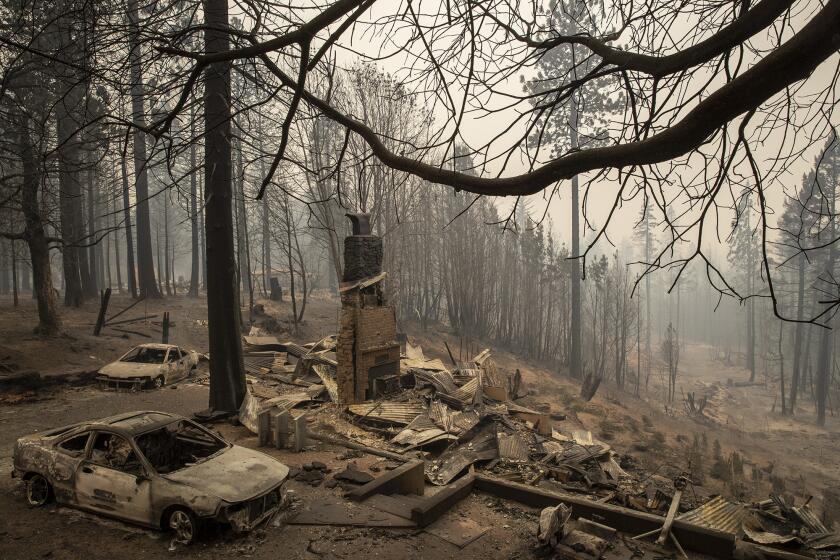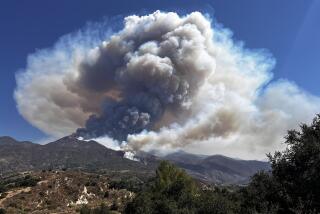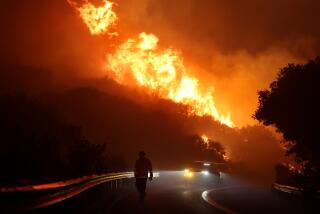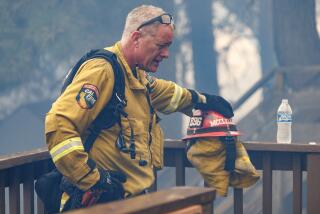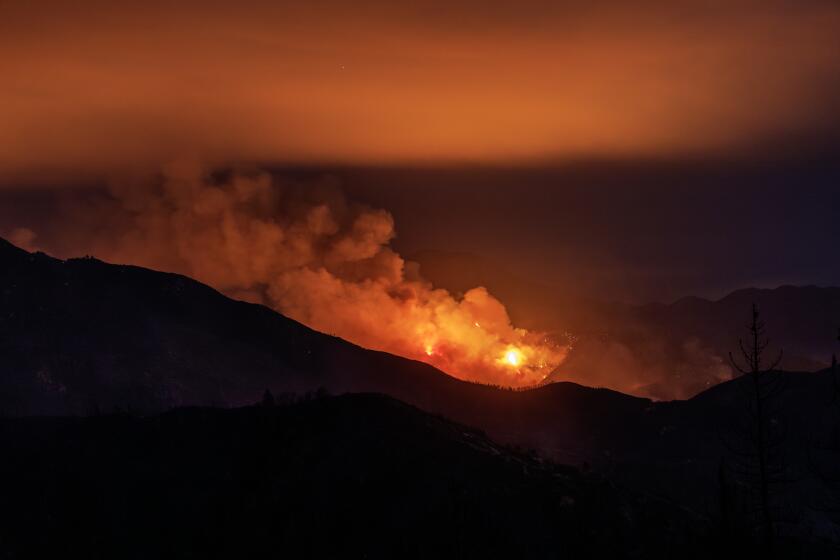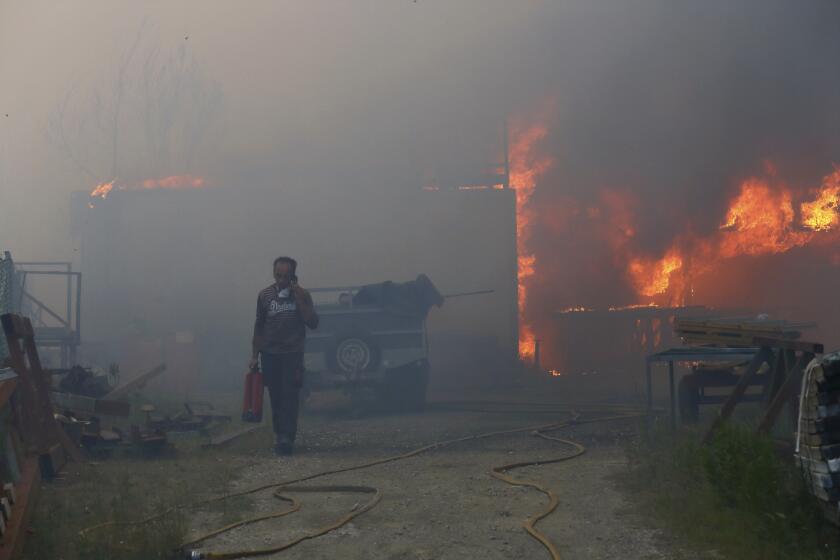Column: What’s with the ridiculous fire ‘complex’ names in California?

We’ve got the North Complex fire and the August Complex fire. Then there’s the CZU Lightning Complex fire and the LNU Lightning Complex fire, not to mention the SCU Lightning Complex fire.
It’s just all so complex.
In normal times — whatever that means anymore — most wildfires in California were named after landmarks. The emergency dispatcher who fields the first call about flames typically looks up the coordinates for the incident on a map and finds a nearby valley, river or canyon, sometimes a road, after which to name the conflagration. Sometimes it’s the incident commander who decides.
Either way, they keep it short, using a name that’s just one word. That’s why the wildfire that ignited in July along Apple Tree Lane in Riverside County, for example, became the Apple fire.
But these are abnormal times. Or new normal times? Or new abnormal times? Or maybe just the end of times.
Whatever.
All I know is that, this year, there are so many wildfires scorching the parched wilderness in California that the flames have merged into masses called “complexes.” According to the U.S. Forest Service, a “complex” is two or more individual fire incidents in the same general area that are assigned to the same commander or unified command.
The North Complex fire near Oroville in Butte County is now blamed for nine deaths, placing it among the deadliest wildfires in state history.
The August Complex, for example, is actually made up of about 40 individual fires burning in and around Tehama County.
“When we have these lightning events that happen every few years, we get into this quote-unquote ‘complex issue,’” said Tom Harbour, a former director of fire and aviation for the U.S. Forest Service. “A complex issue is just for the ease of the incident management team to deal with the group of fires. I will tell you that it’s confusing.”
Indeed, what might be handy for firefighters managing a rapidly changing situation on the ground is not so handy for the rest of us. We won’t even talk about how long it took me to figure out what the LNU in “LNU Lightning Complex” stood for.
Twitter is another mess entirely.
As is known by most Californians who live in a fire zone (which is all of us now), the social media platform has become one of the best ways to get real-time information from reliable sources, whether that’s from Cal Fire, the local sheriff’s department or journalists.
It’s all about the hashtags. #CreekFire, #BobcatFire, #OakFire, #BearFire. Well, the fire formerly known as #BearFire. This year, such once-trusty hashtags have been morphing at a rapid pace.
I’ll let Ventura County Fire Capt. Steve Kaufmann, the public information officer for the team on the ground in Butte County, explain why.
“Hopefully you can follow me on this,” he said at a news conference Thursday evening, after flames had decimated the mountain town of Berry Creek, killing at least 10 people, including a teenager.
“There were two fires up in the Plumas National Forest. One was called the Claremont fire [#ClaremontFire]. One was called the Bear fire. When those fires merged, they take on the name of the largest fire. The largest fire was the Bear fire, so the entire fire got called the Bear fire. Both of those were in what we call the North Complex.”
Uh huh.
“For a little bit of history,” Kaufmann continued, “when there’s a lot of fires in the state of California and they assign an incident management team to manage those fires, when there’s multiple fires in an area they will call it a complex. So that fire was called the North Complex.
“In the early hours, when the fire was pressing into Butte County, they were using terms like ‘Bear fire’ or ‘Bear contingency.’ We have completely renamed and taken the ‘Bear fire’ or ‘Bear contingency’ out of the equation to reduce the confusion. So going forward, it will be known as the North Complex, and when we speak about the fire that is directly affecting Butte County, it will be known as the North Complex West Zone.”
Only, as of Friday, most people were still calling the North Complex West Zone the Bear fire. So now, in order to find that real-time, reliable information, it might be under any of those hashtags — #BearFire, #NorthComplex, #NorthComplexFire or #NorthComplexWestZone.
There has been similar confusion over the behemoth that is the August Complex fire. By one estimate, it now tops 491,000 acres. But by another estimate, it’s more like 725,000 acres — if you include the Elkhorn fire, which swallowed the smaller Hopkins fire among others burning in the Mendocino, Shasta-Trinity and Six Rivers national forests.

It just depends on how complex you want make it.
Meanwhile, the August Complex has now been divided into three zones: North, West and South. But Humboldt County, at least as of Friday on Twitter, was still hanging onto the #HopkinsFire. #AugustComplex was suspiciously missing.
So you figure it out.
Rather, you shouldn’t have to do that, and neither should I. Though many of us might get a chuckle out of the confusion, the truth is clear communication has never been more vital at a time when megafires are ravaging the state without mercy. Missing, even by a few minutes, an order to evacuate or a warning about incoming flames could easily be the difference between life and death.
“Years ago, there was no Twitter. There was no Facebook. There, in fact, weren’t nearly the demands for public information that we have today,” said Harbour, who also is chief fire officer at Cornea, an Arizona data company specializing in disaster management. “But we want people to know where the risks are. And so we’ve got to figure it out.”
It really doesn’t have to be this complex.
More to Read
Sign up for Essential California
The most important California stories and recommendations in your inbox every morning.
You may occasionally receive promotional content from the Los Angeles Times.
